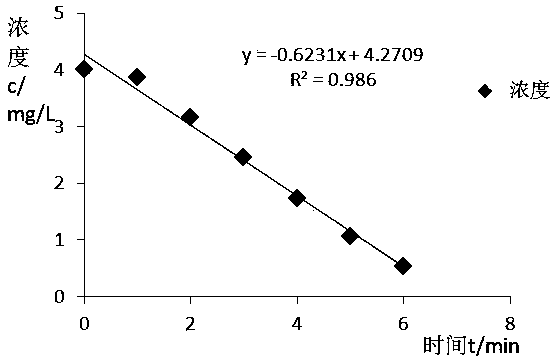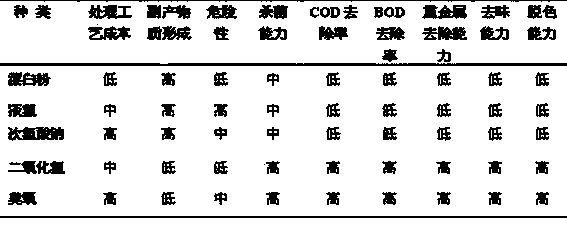Method for restraining formation and growth of spirogyra on water surfaces
A technology of Spirogyra and water temperature, which is applied in the directions of oxidized water/sewage treatment, sterilization/microdynamic water/sewage treatment, etc. It can solve the problems affecting physical and mental health, damage to aquatic plants and beneficial microorganisms, and high economic costs, and achieve water recovery. The effect of ecological environment, prevention and control of secondary pollution, and improvement of water environment
- Summary
- Abstract
- Description
- Claims
- Application Information
AI Technical Summary
Problems solved by technology
Method used
Image
Examples
Embodiment Construction
[0022] A method for inhibiting the formation and growth of Spirogyra of the present invention will be further described in detail below.
[0023] The method operates as follows:
[0024] When the sunlight is 2500lux-5000lux and the water temperature is 7-25℃, sprinkle or put chlorine dioxide with a concentration of 2.3mg / L-4.5mg / L on the surface of water bodies such as ponds, ditches or lakes where a large number of Spirogyra grow. , once every 5 minutes, 2-3 times, so that the chlorine dioxide and the water surface spongy fully contact for 10-15 minutes, and the structure of the water surface spongy is broken, and finally digested by itself until it disappears, so as to inhibit the water surface water The formation and growth of spongy spongy, thereby controlling the outbreak of Spirogyra.
PUM
| Property | Measurement | Unit |
|---|---|---|
| clearance rate | aaaaa | aaaaa |
Abstract
Description
Claims
Application Information
 Login to View More
Login to View More - R&D
- Intellectual Property
- Life Sciences
- Materials
- Tech Scout
- Unparalleled Data Quality
- Higher Quality Content
- 60% Fewer Hallucinations
Browse by: Latest US Patents, China's latest patents, Technical Efficacy Thesaurus, Application Domain, Technology Topic, Popular Technical Reports.
© 2025 PatSnap. All rights reserved.Legal|Privacy policy|Modern Slavery Act Transparency Statement|Sitemap|About US| Contact US: help@patsnap.com


